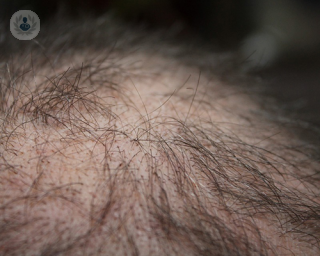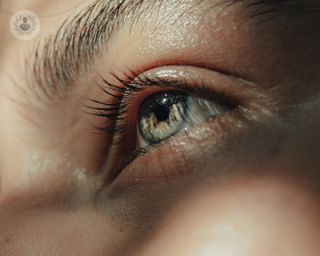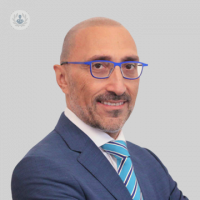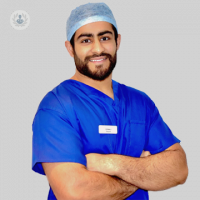FUE hair transplant
Dr Fas Arshad - Plastic surgery
Created on: 03-07-2016
Updated on: 07-26-2024
Edited by: Conor Dunworth
What is the FUE hair transplant?
The FUE (Follicular Unit Extraction) hair transplant technique is a treatment designed to help people add more hair to the areas on their head that are thinning or balding due to excessive hair loss. The technique involves extracting follicular units from genetically stronger areas of the hair, one by one, and implanting them in hairless areas of the scalp. This method can also be applied for rebuilding eyebrows, hiding scars, etc.

At the moment, this technique is considered the most advanced hair transplant technique that exists in aesthetic medicine and the one that offers more natural results. It is performed under local anaesthesia, is non-invasive and usually painless. The patient’s recovery is often easy and quick.
Why is it done?
The FUE technique, in most cases, is done for both men and women with alopecia or excessive hair loss due to male pattern baldness. Usually, healthy hair follicles are taken from the back of the person’s head where an abundance of hair naturally grows and implanted in the desired areas. This final result is a restoration of a full head of thick hair, with no thinning or balding areas, and a natural-looking hairline.
What does it consist of?
FUE transplants are non-invasive and performed under local anaesthetic. The full process can take up to 8 hours and there are usually no complications.
The first stage is the extraction stage where the hairs are removed individually. Each hair is extracted under a microscope to ensure precision and can be removed with the help of a thin calliper of less than 1 mm in diameter.
The second stage is the implantation stage where the hairs are implanted into the hairless areas of the scalp. The transplant area is constantly cleaned and moistened with a special solution to promote the insertion of the follicles.
How do you prepare for the transplant?
Before the intervention, a specific protocol is followed. Photographs of specific parts of the head are taken, so you will be able to see the change when the results become apparent. You will also need to shave the scalp before the procedure.
What happens after the transplant?
After surgery, the doctor will carry out the necessary checks to ensure that the transplant has been successful, and once completed, the treated area will be washed.
Your scalp may be slightly swollen and bruised, which is normal, but the severity of it depends on each person and the medication you take after the procedure. Most people can return to work after although the bruising and swelling will be evident for about a week.
During the first week, you should wash their hair with a special shampoo prescribed by the dermatologist. During the following two weeks, you will not be able to play sports and for the next two months you should not carry out any activity that involves being underwater.
When can I expect to see results?
Full results can take up to 12 months to show, but usually, you will be able to see the results starting to become evident after around 9 months.















